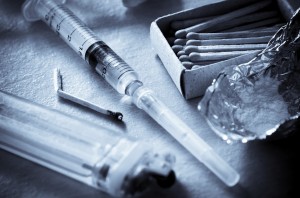Heroin use is not a particularly new problem in Waterford city. How we wish it wasn’t a problem at all, but to suggest that there isn’t an issue and that it isn’t damaging families, neighbourhoods and communities, is akin to opting out of reality.
According to Health Research Board (HRB) statistics published in June, which deal with 2013, opiates (predominantly heroin) were “the…main problem drug reported by cases entering treatment in (the State in) 2013. There were 4,451 cases in 2013”.
Those “entering treatment for the first time in 2013 for whom heroin was the main problem was 875, the equivalent of 25.2% of new clients.”
Two years ago, there were 18 newly diagnosed HIV cases in Ireland among intravenous drug users (that figure has ranged between 13 and 23 since 2010), while there were 847 notifications for hepatitis C, down 18 per cent on the 2012 tally of 1036.
The citing of heroin in the implication of death (be it exclusively used or used with another substance) reached a peak in 2009, in which 118 such fatalities were reported. By 2012, this had fallen to 61.
Methadone, the substitute drug used in the treatment of heroin addiction, was implicated (again in isolated use or with another drug) in 113 deaths in 2011, in comparison to 86 deaths in 2012. Meanwhile, heroin seizures in 2013 totalled 690, a decrease on the 2012 figure which stood at 766.
The latest report issued by the European Monitoring Centre for Drugs and Drug Addiction (EMCDDA), which was published in June, reveals that 0.4 per cent of the EU’s population., across 28 member states, were opioid users.
This is the equivalent of 1.3 million people, which, in Irish terms, breaks down to 18,320, roughly the combined population of Tramore and Dungarvan.
Approximately 41% of all who entered treatment across the EU in 2013 (175,000 people) were opioid users, with heroin the most prevalent such drug.
While those entering “specialist drug treatment for the first time for heroin use fell from a peak of 59,000 in 2007 to 31,000 in 2013, accounting for 20% of all clients entering treatment for the first time”.
Interestingly, the EMCDDA report contends that there has been “an overall stagnation in the demand for heroin in Europe”.
The report’s preamble adds: “The European drug market is inter-linked and the indicators for availability and use of heroin in Ireland reflect the overall picture in Europe.
“The EMCDDA report warns that an increase in production in most of the countries supplying Europe with heroin could result in more of the drug becoming available in European drug markets.
“Other changes in market dynamics, including processing of heroin inside Europe, the emergence of alternative trafficking routes and diversification of products from opioid producing countries in Asia, need to be monitored carefully.
“As the age profile of heroin users increases, providing appropriate treatment and care to long-term uses is a growing challenge for drug treatment and social services today.”
Discussing heroin in either a Waterford, regional or even a national context, without considering the international perspective, doesn’t give the topic the credence it clearly warrants.
After all, according to the United Nations (as NBC News reported in May) , 90 per cent of the world’s supply of opium poppy can be sourced to Afghanistan, with 500,000 acres (780 square miles) of land there devoted to poppy production.
Putting that in a Waterford context, that’s akin to just over a quarter of the county’s entire landmass being set aside for the production of heroin.
The ‘war on drugs’ in Afghanistan is clearly being lost, despite the billions of dollars the United States has thrown at the problem, along with the countless payloads of bombs dropped by the US Air Force on poppy fields since 2001.
As this newspaper reported at the time, blights in the Afghan poppy crop in both 2010 and 2012 forced dealers in Waterford to improvise, adding sawdust to heroin joints to ‘beef up’ their produce.
And in an attempt to expand their market in the spring of 2010, dealers in the city were offering free cannabis joints laced with heroin to secondary school pupils who were unaware of the heroin added to their smoke.
One mother, who had to cope with a son and daughter’s addiction (relayed to us at the time by the late Councillor Gary Wyse), had to pay €10,000 to dealers when it came to her daughter’s heroin use alone.
So let’s not pretend the problem that has provoked such discussion in recent weeks is particularly new.
However, as the HSE’s Data Co-Ordination of Drug Misuse Report for 2012 revealed, illicit drug use accounted for just under 33% of treatment referrals in Waterford, in comparison to alcohol, which was cited in 53% of total referrals.
In our April 14th edition, using HRB figures, Michelle Clancy reported that there had been a 53% increase in treatment for opiate (heroin) abuse between 2009 and 2013, adding: “Overall, 418 people in Waterford were treated for drug addiction in 2013, up 63 per cent on 2009 figures.”
Alcohol remains our greatest single social vice. It remains the largest single wrecker of homes and families, yet most of us don’t recoil at the sight of an empty beer can on a streetside like we do when making the unwelcome discovery of a syringe.
An ongoing debate about drugs – heroin in particular – must be aired, voiced and printed. But that debate shouldn’t be discussed without one essential ingredient: context.


